hankyoreh
Links to other country sites 다른 나라 사이트 링크
[Reportage] A lifetime of mining left in the dust as coal is implicated in fine particle pollution
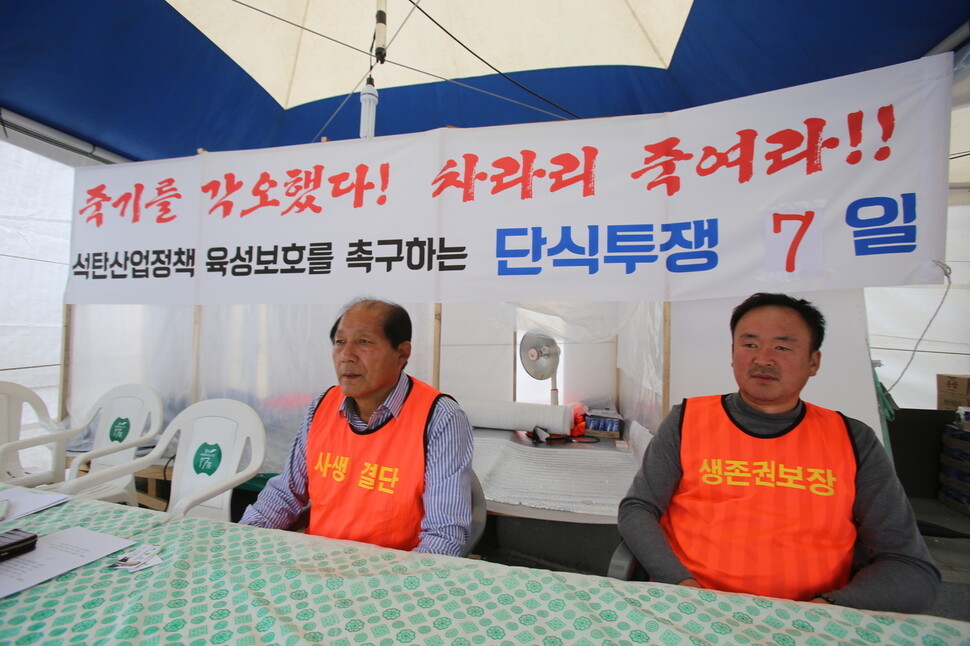
“I understand the government’s position in wanting to reduce coal consumption to cut down on fine particle dust. But we’re citizens too, and they need to provide a way for us to survive.”
This was the appeal of “Kim Gi-ho,” a 52-year-old former miner who met with the Hankyoreh on Oct. 9 in front of Dogye Station in Samcheok, Gangwon Province.
“Coal has been implicated in fine particle dust, and now all of a sudden it feels like we’ve been branded as criminals. These days, there’s no place to sell the coal no matter how hard we work to dig it,” he lamented.
The situation appeared generally bleak for coal mine workers – people who self-deprecatingly describe themselves as doing “blind end work,” but have also taken pride throughout their lives in being “industry warriors.” Born the son of a miner in Dogye, Kim followed in his father’s footsteps as soon as he graduated high school.
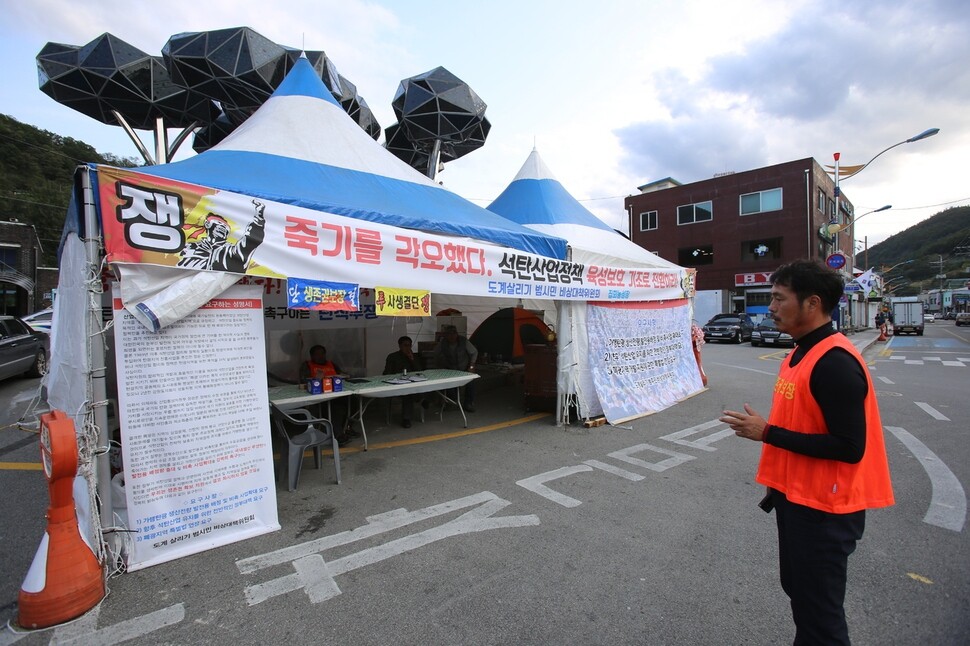
The town of Dogyeo and its reliance on the coal industry
Coal industry rationalization measures in 1989 led to the closures of numerous mines; the economy in coal-mining regions went into free-fall. Many of Kim’s fellow miners lost their jobs and left the region. But Kim, who saw coal mining as his calling, remained in the blind ends, battling coal for over thirty years in narrow shafts hundreds of meters underground. After his experiences over the last three decades, he does not readily accept the administration’s “post-coal” policies. He found himself effectively “restructured” amid a heavy wave of staff cuts. The number of coal mine workers in Dogyeo who quit around the same time as Kim stands at around 130.
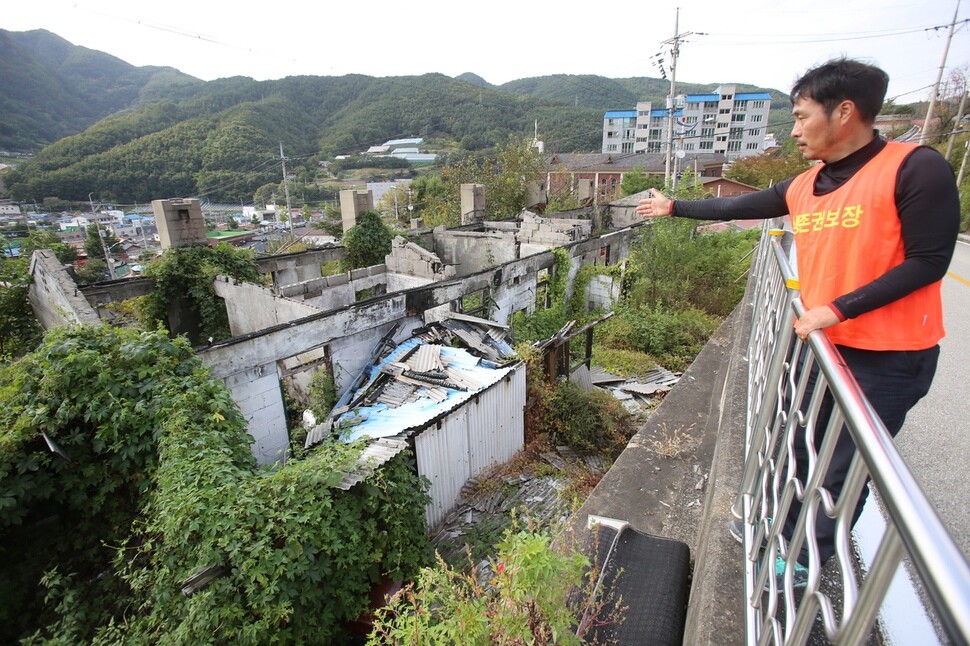

“Because it’s so hot, you’re not in there three hours before your clothes are soaked in sweat, and it drips down and starts sloshing around in your boots. I’ve put up with that and kept at it all this time,” he said, his words trailing off.
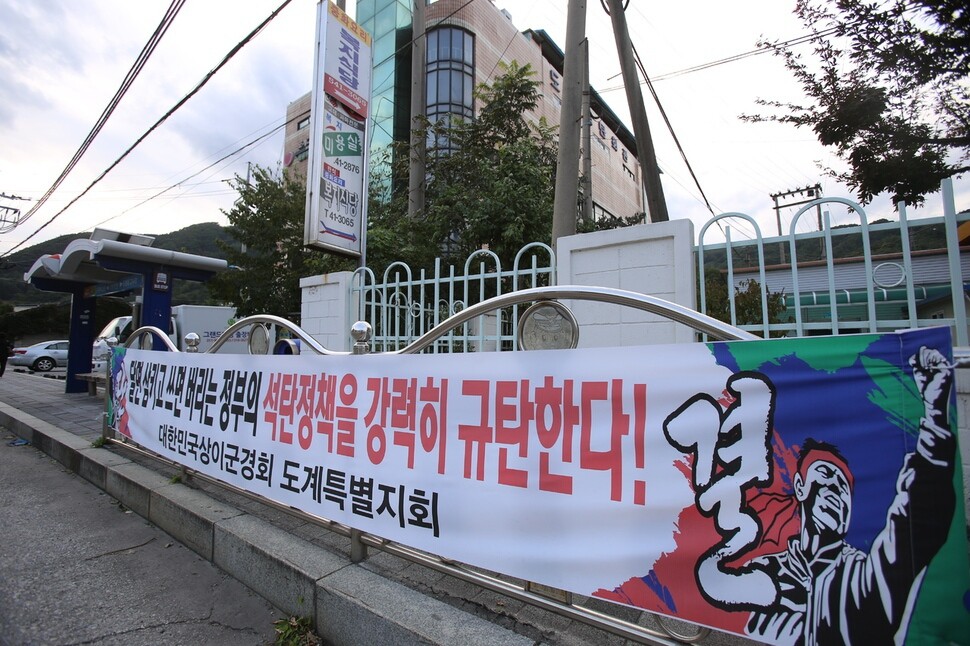
Dogyeo is South Korea’s biggest coal mining area. According to the 2018 coal production plan, it was expected to account for 790,000 of South Korea’s 1,227,000 tons in coal production, or 64.3 percent. Of the five coal mines still remaining in South Korea, two of them are in Dogyeo: Kyungdong, South Korea’s biggest private mine, and the Korea Coal Corporation’s Dogye mining station.
Coal miners represent around 1,500 of Dogyeo’s 12,000 residents. If a family is assumed to consist of four residents, half of Dogyeo’s population – 6,000 people – are estimated to belong to mining families. If people who supply items to the mines or sell to the workers are factored in, the majority of residents are dependent on the mines to make a living. This is why people speak of the mines’ closure as “spelling the death of Dogye.”
But after holding out against the government’s increased post-coal drive, two of the Dogye mines found their main markets closed to them. First, Seocheon Thermal Power Plant, in South Chungcheong Province, shut down in June 2017. Then Youngdong Thermal Plant, in Gangneung, Gangwon Province, replaced coal with wood pellets as its energy source the following July. Most of the coal produced in Dogyeo has been supplied to power plants in Gangneung and Seocheon. As a mining community, Dogye found its fate hanging in the balance.
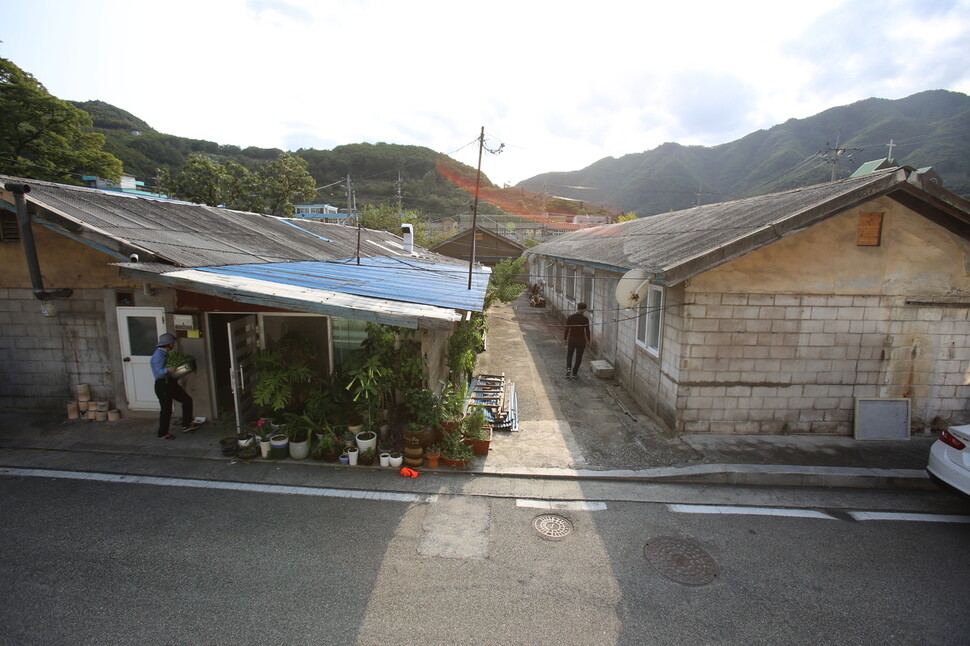
Pleas to increase domestic coal consumption
Residents have asked the government to increase the percentage of domestic rather than imported coal used in South Korea’s coal-fired power plants. They argue that using a large percentage of high-quality domestic coal would allow a reduction in the amount of fine particle dust generated while protecting the domestic coal industry. Putting the volume of coal needed for Dogyeo’s mines to sustain their current level at 170,000 tons, residents have suggested the government could earmark an annual budget of just 5 billion won (US$4.4 million) to make up the difference between domestic and imported coal.
“If Dogye’s mines keep closing down, that means the loss of over 1,500 mining jobs and more than 2,000 jobs in related industries,” said resident Kang Yong-hee, 64. “Rather than spending tens of billions of won creating new jobs, shouldn’t they make a priority of saving the jobs that exist already and stopping the region from collapsing?”
But the central government has balked at allocating a budget. A Ministry of Trade, Industry and Energy official acknowledged that “raising the percentage of domestic cost would require increasing the budget,” but remained quiet on whether that increase would actually happen, saying only that “next year’s budget plan is currently being discussed in the National Assembly.”
Indignant residents said they are ready to battle the government if it does not come out with countermeasures by the end of the month. Some have gone so far as to call for occupying the Youngdong railway line, which goes through Dogye, and refusing to send children to school. Since Sept. 17, a resident struggle committee has been holding a relay hunger strike in tents set up on the plaza in front of Dogye Station.

Around 1,000 mine workers and residents gathered on the plaza in front of Dogye’s administration and welfare center on Oct. 3 for a “citizens’ indignation rally to save Dogye.” It was the first street campaign by residents in 17 years; on Oct. 10, 2000, Dogye residents occupied the Yeongdong railway line to protest the Korea Coal Corporation’s plan to close the central tunnel of its Dogye mining station.
“You can really sense how hard things have gotten for the region recently. Lots of local restaurants have shut off their gas and closed down for lack of business,” said Kim Jong-guk, a 52-year-old resident who runs a gas company.
“They need to give us a little more time to find a way for the mining village to sustain itself,” Kim pleaded.
By Park Soo-hyuk, Gangwon correspondent
Please direct comments or questions to [english@hani.co.kr]

Editorial・opinion
![[Editorial] Intensifying US-China rivalry means Seoul must address uncertainty with Beijing sooner than later [Editorial] Intensifying US-China rivalry means Seoul must address uncertainty with Beijing sooner than later](https://flexible.img.hani.co.kr/flexible/normal/500/300/imgdb/original/2024/0517/8117159322045222.jpg) [Editorial] Intensifying US-China rivalry means Seoul must address uncertainty with Beijing sooner than later
[Editorial] Intensifying US-China rivalry means Seoul must address uncertainty with Beijing sooner than later![[Column] When ‘fairness’ means hate and violence [Column] When ‘fairness’ means hate and violence](https://flexible.img.hani.co.kr/flexible/normal/500/300/imgdb/original/2024/0516/7417158465908824.jpg) [Column] When ‘fairness’ means hate and violence
[Column] When ‘fairness’ means hate and violence- [Editorial] Yoon must stop abusing authority to shield himself from investigation
- [Column] US troop withdrawal from Korea could be the Acheson Line all over
- [Column] How to win back readers who’ve turned to YouTube for news
- [Column] Welcome to the president’s pity party
- [Editorial] Korea must respond firmly to Japan’s attempt to usurp Line
- [Editorial] Transfers of prosecutors investigating Korea’s first lady send chilling message
- [Column] Will Seoul’s ties with Moscow really recover on their own?
- [Column] Samsung’s ‘lost decade’ and Lee Jae-yong’s mismatched chopsticks
Most viewed articles
- 1[Editorial] Transfers of prosecutors investigating Korea’s first lady send chilling message
- 2[Exclusive] Unearthed memo suggests Gwangju Uprising missing may have been cremated
- 3[Column] US troop withdrawal from Korea could be the Acheson Line all over
- 4[Editorial] Intensifying US-China rivalry means Seoul must address uncertainty with Beijing sooner t
- 5Xi, Putin ‘oppose acts of military intimidation’ against N. Korea by US in joint statement
- 6[Column] When ‘fairness’ means hate and violence
- 7China calls US tariffs ‘madness,’ warns of full-on trade conflict
- 8China, Russia put foot down on US moves in Asia, ratchet up solidarity with N. Korea
- 9‘Shot, stabbed, piled on a truck’: Mystery of missing dead at Gwangju Prison
- 10Records show how America stood back and watched as Gwangju was martyred for Korean democracy